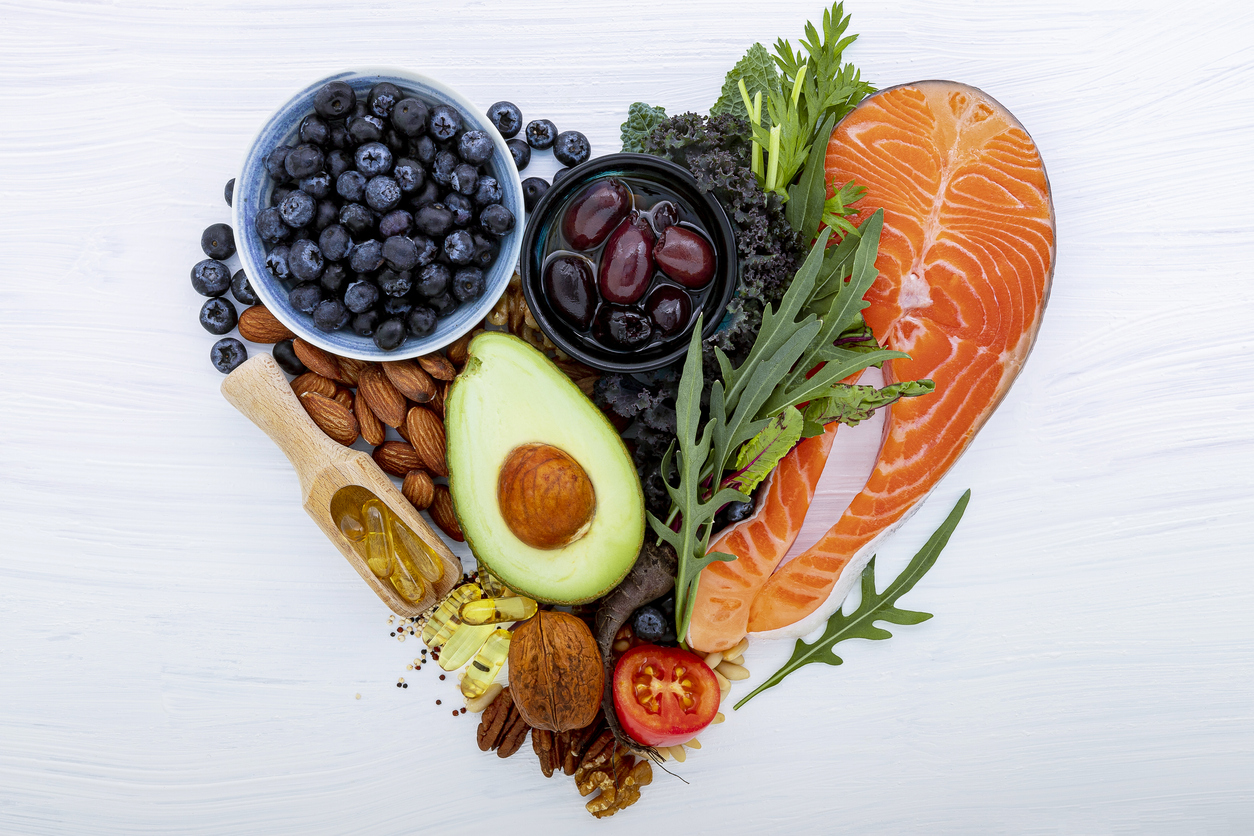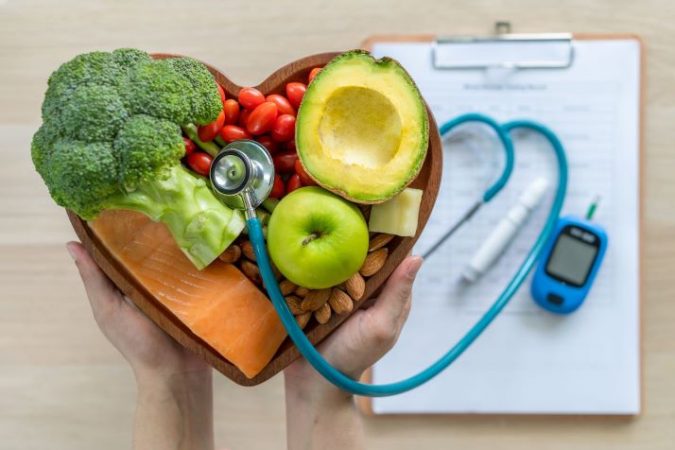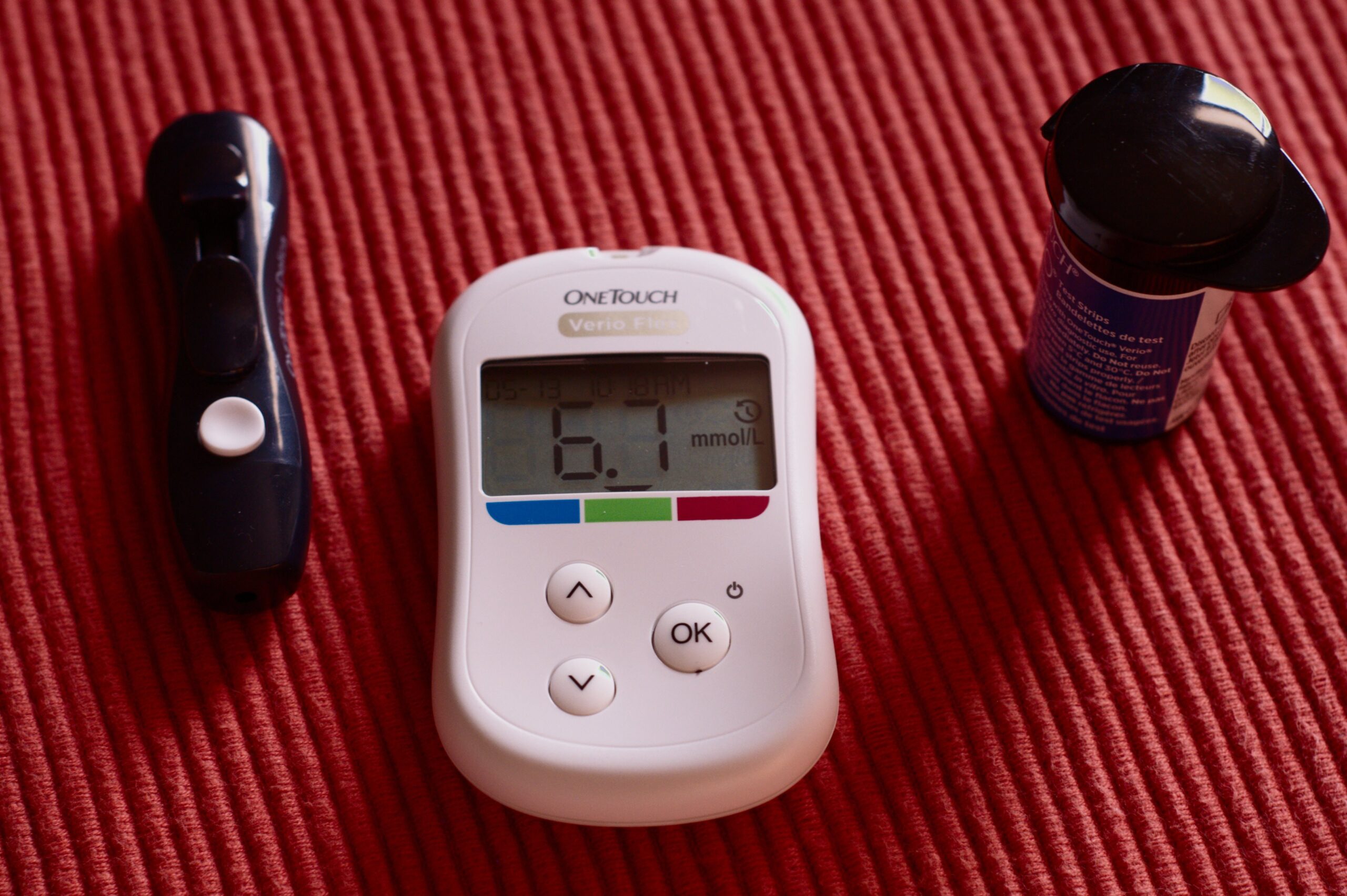As the keto diet has continued to climb in popularity, there has never been a greater need for understanding exactly how the approach works. Most people know that keto is low carb, but they may not know exactly how (and why) it works so well for weight loss. To understand this, we need to look at exactly what the keto diet is, how it’s different from the standard American diet, how it shifts our metabolism into overdrive, and what exactly fuels this new approach to fat loss. Equally important to the diet – are ketones. These drive the ability to burn off stored body fat, and are not in abundance during a standard western nutritional approach.
What Is the Keto Diet?
The keto diet — also referred to as the ketogenic diet — is a low-carbohydrate diet, where your body uses fat for fuel. By removing almost all carbohydrates, and inserting healthy fats in their place, your body enters an advanced fat-burning condition called nutritional ketosis. Once in ketosis, your body will start using fat for energy, rather than carbohydrates or glucose.
This is all in direct contrast to the standard American diet, which requires a constant intake of carbohydrates to keep your energy levels high. As anyone who has missed a meal can tell you – it is quite unpleasant to go without carbs for even 12 hours, when consuming a traditional high carb diet. This is largely due to your blood sugar levels falling, and your body being unable to tap into its own fat reserves.
By contrast, ketosis solves all of these problems, as ketones begin to be produced by the body itself, when we go long enough without consuming carbohydrates. You see, nutritional ketosis is the technical term for what happens when we follow a ketogenic diet, and ketones are the gasoline that helps power the diet. But before we get ahead of ourselves, it is important to understand exactly what ketosis is.
How Ketosis Works
In a normal American diet, carbohydrates are consumed in abundance. Once eaten, carbs turn into glucose. Glucose can be thought of as the simplest form of sugar, and it is easy for the body to convert and use as your primary source of energy. Thus, glucose is your main source of fuel, when consuming the standard American diet. As a lot of carbs are consumed, your body has a rise in blood sugar, as these carbs are turned into glucose. Then, your body creates insulin, which is a hormone meant to transport glucose throughout your body. You may have heard the term ‘insulin spike’ – this is what that term refers to.
As your body uses this glucose, any extra glucose not being used is stored. This reserve of energy sounds good – until you realize it is stored as body fat. If you keep eating carbohydrates, your body will continually use glucose as its fuel source. This may seem beneficial, but in reality, it means you can’t dip into your fat stores. This leaves you in a state of constantly storing excess energy, which leads to weight gain. Meanwhile, you are unable to dip into your fat reserves, so you can’t burn off any body weight.
Luckily for those who follow the keto diet, the only way to start burning off fat stores is by removing carbohydrates entirely. In turn, this diminishes your glucose stores (usually referred to as ‘glycogen’). At this point, your body essentially realizes it is running out of energy, so it starts dipping into its reserves of stored fat. And there you have it – how keto is different than every other diet, and how it actually burns off your stored body fat.

How Can I Get into Ketosis?
There are a number of ways to shift into nutritional ketosis. The most important priority is cutting out the carbs. The standard American diet recommends consuming between 200 and 300 grams of carbohydrates per day. By contrast, keto usually involves eating 20 grams of carbohydrates throughout the day. This drastic shift can temporarily put you in a condition called the ‘keto flu’, but this is only a passing phase. While the keto diet is certainly high in healthy fats – cutting out the carbs is actually the most critical step to getting in (and staying in) ketosis.
What Are Ketones?
During this metabolic shift, your body turns fatty acids into something called ‘ketones’. Your body essentially responds to a depletion of carbohydrates, by literally making a new form of fuel. These ketones are produced by your liver, and they are composed of fat (hence why the keto diet is referred to as a ‘fat burning’ approach). While ketone production is greatly increased during a ketogenic diet, the truth is that ketones are nearly always floating around your system.
The process of stored fat turning into energy, is known as beta-oxidation. While there used to be confusion around ketosis, and a much different (and highly dangerous) process called ‘metabolic ketoacidosis’ – the truth is they have very little in common. During the process of ketosis, which is very safe, any excess ketones will be eliminated via your breath or urine. Interestingly, there is not just one type of ketone body but rather three. There’s acetone, BHB (beta-hydroxybutyric acid), and AcAc (acetoacetate). Of these, BHB is not technically a ketone, due to its structure. However, for our intents and purposes, BHB is included in nearly every discussion of ketogenic diets.
Both AcAc and BHB help to transport energy from your liver, to the other tissues inside your body. AcAc is the first ketone created, and from there, BHB is formed. Acetone is made as a byproduct of AcAc, but it plays the least important role in the metabolic process of ketosis. Acetone is also notable for being the main reason behind keto breath, which is that slightly fruity smell, that sometimes accompanies a keto dieter’s outward breath. Scientists are not entirely sure why we have the ability to shift into ketosis, but they surmise that we have the metabolic machinery necessary because our ancestors needed an alternative fuel, when food was scarce for long periods of time. This actually makes perfect sense, as otherwise we would have starved fairly quickly, and possessed no other way to produce energy. In fact, before agriculture, it’s estimated that most of the human diet was very low carb, as higher carbohydrate foods were largely unavailable.
Testing For Ketones
There have traditionally been three methods to test your ketone levels. Urine testing, blood testing, and breath testing. Each method has its own pros and cons, which we have broken down for you below.
Urine Ketone Testing
This is fairly self-explanatory, as the keto dieter will urinate on a special ketone testing strip. The strip will change color, revealing a rough estimate of your current ketone production. This method is not very accurate, especially as your body becomes more keto-adapted.
Pros:
Helpful for beginners, doesn’t involve drawing blood, testing strips can be purchased at any pharmacy.
Cons:
Is not accurate, becomes very expensive after only a few tests.
Blood Ketone Testing
This method is extremely inconvenient, but traditionally has provided the most accurate ketone level results. Pricking your finger is all that is required for a blood ketone test, but it is not convenient at all (to say the least). It is also very invasive.
Pros:
Traditionally the most accurate test.
Cons:
Extremely inconvenient, not for anyone who dislikes pricking their own finger, very expensive after even minor use.
Breath Ketone Testing
This method is very convenient, but traditionally has provided less than accurate ketone levels. It can also be fairly costly, relatively speaking. To perform a ketone breath test, you breathe into a keto meter, to determine the amount of acetone present on your breath.
Pros:
Most convenient, least invasive method, affordable after purchasing the meter.
Cons:
Traditionally not that accurate, semi-expensive to buy the meter itself.
However, at this point we should mention that we have invented the first and only clinically backed ketone breath monitor. By simply breathing in our device, you will have a reliable measurement of your current ketone levels – in just seconds. No more urine strips, no more pricking your finger – just a fast, easy and reliable breath test. You can bring our device with you to the office, take it to the gym – you can truly check your ketones anywhere. Unlike previous breath devices, which were often poorly made, unreliable, and not backed by clinical research – our ketone breath monitor is patented. This means no other device is legally allowed to use our exclusive technology. Whether you are brand new to keto and want a convenient and reliable way to check your ketone levels, or you’re an elite level biohacker – Biosense is the perfect way to measure your ketones.

What Is A Healthy Range for Ketones?
No matter how you decide to test your ketone levels, it is critically important to know what they are, when following a ketogenic diet. Typically, keto levels range between 0 and 3 mmol/L, which stands for millimoles per liter. We have listed the standard ranges of ketone levels below, but keep in mind your results may vary, depending on your activity level, diet, and how long you’ve been fat adapted.
| Negative Ketone Level: less than 0.6 mmol |
| Low/Moderate Ketone Level: between 0.6 to 1.5 mmol |
| High Ketone Level: 1.6 to 3.0 mmol |
| Very High Ketone Level: greater than 3.0 mmol |
Ketone Side Effects
As you make the jump to a ketogenic diet, your body is undergoing a large amount of metabolic and cellular changes. During this initial adaptation, you may experience a small set of unpleasant symptoms, commonly referred to as the ‘keto flu’. Water and electrolyte loss are two of the biggest culprits, so be sure to stay hydrated, as well as possibly supplement with additional electrolytes. Not everyone experiences keto flu symptoms, but if you do, you can be sure they will subside within 2-3 days.
Common Keto Flu Symptoms
- Feeling weak
- Flu-like feelings
- Headaches
- Feeling “foggy” mentally
- Mild fatigue or irritability
Diabetic Ketoacidosis (DKA)
One side effect to look out for in people with type I and type II diabetes is diabetic ketoacidosis. If ketones build up and reach a very high level, the blood can become acidic. This condition is usually the result of missed insulin injections, or low insulin levels. If you have type I or type II diabetes, always consult with your doctor before undertaking a ketogenic diet.
In Conclusion
Ketones are a critical part of a fat-burning diet. Contrary to popular belief they are not dangerous at all, and in fact are a sign that your metabolism is humming along smoothly. By foregoing carbohydrate consumption, we stabilize our blood sugar levels and burn off stored body fat. Ketones are a byproduct of this process, as they become the body and brain’s new preferred source of fuel. Ketone production can be measured via blood test, urine test, or breath test. But our revolutionary new device, Biosense, is the most convenient, most accurate, and most affordable way to check your ketone levels.
As the first and only clinically backed ketone breath monitor, we take great pride in providing accurate and convenient ketone readings. By simply breathing into our device, you will have a reliable measurement of your current ketone levels – within seconds. No more urine strips, no more pricking your finger – just a fast, easy and reliable breath test. You can bring our device with you to the office, take it to the gym – you can truly check your ketones anywhere. Unlike previous devices, which were often poorly made, unreliable, and not backed by clinical research – our ketone breath monitor is patented. This means no other device is legally allowed to use our exclusive technology. Whether you are brand new to keto and want a convenient and reliable way to check your ketone levels, or you’re an elite level biohacker – Biosense is the perfect way to measure your ketones.
You don’t need to worry about continually buying strips, continually pricking your finger – we have all you need, in just one device. One of our favorite features is the personalized insights you get with the device. Every time you measure, your results are graphed and stored, so you can easily track your progress. Until now, there has not been an easy and convenient way to check your ketone levels – which has made many people give up on the keto diet entirely. But that outcome is no longer necessary, as we’ve made a device that does all the work for you. Just simply take one breath into the device, and within seconds you’ll know your ketone level. Whether your goal is to burn fat, lose weight, or improve your blood sugar – we have the answer.
References:
Coulston AM, Liu GC, Reaven GM. Plasma glucose, insulin and lipid responses to high-carbohydrate low-fat diets in normal humans. Metabolism. 1983;32:52–6.
Chen YDI, Swami S, Skowronski R, Coulston AM, Reaven GM. Effects of variations in dietary fat and carbohydrate intake on postprandial lipemia in patients with non-insulin dependent diabetes mellitus. J Clin Endocrinol Metab. 1993;76:347–51.
Mitchell GA, Kassovska-Bratinova S, Boukaftane Y, et al. Medical aspects of ketone body metabolism. Clin Invest Med. 1995;18:193–216.
Koeslag JH. Post-exercise ketosis and the hormone response to exercise: A review. Med Sci Sports Exerc. 1982;14:327–34.
Winder WW, Baldwin KM, Holloszy JO. Exercise-induced increase in the capacity of rat skeletal muscle to oxidize ketones. Can J Physiol Pharmacol. 1975;53:86–91.
Yehuda S, Rabinovitz S, Mostofsky DI. Essential fatty acids are mediators of brain biochemistry and cognitive functions. J Neurosci Res. 1999;56:565–70.
Amiel SA. Organ fuel selection: Brain. Proc Nutr Soc. 1995;54:151–5.
Singhi PD. Newer antiepileptic drugs and non surgical approaches in epilepsy. Indian J Pediatr. 2000;67:S92–8.
Janigro D. Blood-brain barrier, ion homeostatis and epilepsy: Possible implications towards the understanding of ketogenic diet mechanisms. Epilepsy Res. 1999;37:223–32.
Kossoff EH, Pyzik PL, McGrogan JR, Vining EP, Freeman JM. Efficacy of the ketogenic diet for infantile spasms. Pediatrics. 2002;109:780–3.
El-Mallakh RS, Paskitti ME. The ketogenic diet may have mood-stabilizing properties. Med Hypotheses. 2001;57:724–6.
Golay A, DeFronzo RA, Ferrannini E, et al. Oxidative and non-oxidative glucose metabolism in non-obese type 2 (non-insulin dependent) diabetic patients. Diabetologia. 1988;31:585–91.
Defronzo RA, Simonson D, Ferrannini E. Hepatic and peripheral insulin resistance: A common feature of type 2 (non-insulin-dependent) and type 1 (insulin-dependent) diabetes mellitus. Diabetologia. 1982;23:313–9.
Defronzo RA, Diebert D, Hendler R, Felig P. Insulin sensitivity and insulin binding in maturity onset diabetes. J Clin Invest. 1979;63:939–46.
Pilkington TR, Rosenoer VM, Gainsborough H, Carey M. Diet and weight-reduction in the obese. Lancet. 1960;i:856–8.
Howard BV, Wylie-Rosett J. Sugar and cardiovascular disease: A statement for healthcare professionals from the Committee on Nutrition of the Council on Nutrition, Physical Activity, and Metabolism of the American Heart Association. Circulation. 2002;106:523–7. Erratum in 2003;107:2166.
Franceschi S, Favero A, Decarli A, et al. Intake of macronutrients and risk of breast cancer. Lancet. 1996;347:1351–6.
Liu S, Manson JE, Stantpfer MJ, et al. Dietary glycemic load assessed by food-frequency questionnaire in relation to plasma high-density-lipoprotein cholesterol and fasting plasma triacylglycerols in postmenopausal women. Am J Clin. 2001;73:560–6.
Gaziano JM, Hennekens CH, O’Donnell CJ, Breslow JL, Buring JE. Fasting triglycerides, high-density lipoprotein and risk of myocardial infarction. Circulation. 1997;96:2520–5.
Kreitzman SN. Factors influencing body composition during very-low-caloric diets. Am J Clin Nutr. 1992;56(l Suppl):217S–23S.
Cullingford TE, Eagles DA, Sato H. The ketogenic diet upregulates expression of the gene encoding the key ketogenic enzyme mitochondrial 3-hydroxy-3-methylglutaryl-CoA synthase in rat brain. Epilepsy Res. 2002;49:99–107.
Prentice AM. Manipulation of dietary fat and energy density and subsequent effects on substrate flux and food intake. Am J Clin Nutr. 1998;67(3 Suppl):535S–41S.
Foster GD, Wyatt HR, Hill JO, et al. A randomized trial of a low-carbohydrate diet for obesity. N Engl J Med. 2003;348:2082–90.
He K, Merchant A, Rimm EB, et al. Dietary fat intake and risk of stroke in male US healthcare professionals: 14 year prospective cohort study. BMJ. 2003;327:777–82.
Westman EC, Mavropoulos J, Yancy WS, Volek JS. A review of low-carbohydrate ketogenic diets. Curr Atheroscler Rep. 2003;5:476–83.
Petersen KF, Befroy D, Dufour S, et al. Mitochondrial dysfunction in the elderly: Possible role in insulin resistance. Science. 2003;300:1140–2.
Foster-Powell K, Holt SH, Brand-Miller JC. International table of glycemic index and glycemic load values: 2002. Am J Clin Nutr. 2002;76:5–56.
Leeds AR. Glycemic index and heart disease. Am J Clin Nutr. 2002;76:286S–9S.
Liu S, Willett WC, Stampfer MJ, et al. A prospective study of dietary glycaemic load, carbohydrate intake, and risk of coronary heart disease in US women. Am J Clin Nutr. 2000;71:1455–61.
Sims EA, Danford E, Jr, Horton ES, Bray GA, Glennon JA, Salans LB. Endocrine and metabolic effects of experimental obesity in man. Recent Prog Horm Res. 1973;29:457–96.
Hollenbeck B, Y-Di Chen, Reaven GM. A comparison of the relative effects of obesity and non-insulin dependent diabetes mellitus on in vivo insulin-stimulated glucose utilization. Diabetes. 1984;33:622–6.
Kolterman OG, Gray RS, Griffin J, et al. Receptor and postreceptor defects contribute to the insulin resistance in noninsulin-dependent diabetes mellitus. J Clin Invest. 1981;68:957–69.
Gresl TA, Colman RJ, Roecker EB, et al. Dietary restriction and glucose regulation in aging rhesus monkeys: A follow-up report at 8.5 yr. Am J Physiol Endocrinol Metab. 2001;281:E757–65.
Hansen BC, Bodkin NL. Primary prevention of diabetes mellitus by prevention of obesity in monkeys. Diabetes. 1993;42:1809–14.
Ziegler DR, Araujo E, Rotta LN, Perry ML, Goncalves CA. A ketogenic diet increases protein phosphorylation in brain slices of rats. J Nutr. 2002;132:483–7.
Groot PH, Van Stiphout WA, Krauss XH, et al. Postprandial lipoprotein metabolism in normolipidemic men with and without coronary artery disease. Arterioscler Thromb. 1991;11:653–62.
Patsch JR, Miesenbock G, Hopferweiser T, et al. Relation of triglyceride metabolism and coronary artery disease studies in the postprandial state. Arterioscler Thromb. 1992;12:1336–45.
Abbasi F, McLaughlin T, Lamendola C, et al. High carbohydrate diets, triglyceride-rich lipoproteins and coronary heart disease risk. Am J Cardiol. 2000;85:45–8.
Chen YD, Hollenbeck CB, Reaven GM, Coulston AM, Zhou MY. Why do low-fat high-carbohydrate diets accentuate postprandial lipemia in patients with NIDDM? Diabetes Care. 1995;18:10–6.
Gardner CD, Kraemer HC. Monosaturated versus polyunsaturated dietary fat and serum lipids and lipoproteins. Arterioscler Thromb Vasc Biol. 1995;15:1917–25.
Jeppesen J, Schaaf P, Jones C, Zhoue MY, Chen YD, Reaven GM. Effects of low-fat, high-carbohydrate diets on risk factors for ischemic heart disease in post-menopausal women. Am J Clin Nutr. 1997;65:1027–33.
Mensink RP, Katan MN. Effect of dietary fatty acids on serum lipids and lipoproteins. Arterioscler Thromb. 1992;12:911–9.[/showhide]



